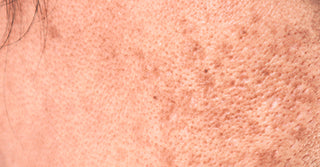Have you ever noticed uneven skin tone, dark spots, or patches that appear more prominently after sun exposure?
This condition is known as pigmentation or hyperpigmentation, and it affects millions of people worldwide.
While pigmentation is not painful, it can impact one’s confidence and often signals that your skin’s melanin production is unbalanced.
This guide explains what pigmentation is, why it occurs, its common types, and how you can prevent it from worsening — safely and effectively.
What Is Pigmentation?
Pigmentation refers to the coloring of the skin. When certain areas of the skin appear darker than others, it’s due to excess melanin, a pigment produced by cells called melanocytes.
Melanin protects the skin from ultraviolet (UV) radiation. However, when its production becomes uneven — due to sun exposure, hormonal changes, or inflammation — it leads to visible patches or spots.
Pigmentation can appear anywhere on the body but is most common on the face, neck, hands, and arms.
The color may vary from light brown to deep brown or grey, depending on skin tone and the depth of melanin deposition.
Common Types of Pigmentation
1. Melasma (Hormonal Pigmentation)
Melasma presents as large, uneven patches — often on the cheeks, forehead, or upper lip.
It primarily affects women and is linked to hormonal changes, including pregnancy, birth control, or hormone therapy.
Because it is triggered by both hormones and sun exposure, melasma requires a combination of sun protection and targeted treatment.

2. Post-Inflammatory Hyperpigmentation (PIH)
PIH develops after the skin experiences inflammation or trauma, such as acne, eczema, burns, or cosmetic procedures.
When the skin heals, melanocytes overproduce pigment in response to inflammation, leaving dark spots behind.
3. Age Spots (Sun Spots or Liver Spots)
Age spots result from long-term UV exposure and typically appear on sun-exposed areas such as the face, neck, and hands.
They are more common after the age of 40 and reflect cumulative sun damage. Read the detailed differnce between age spots and sun spots.
4. Lip Pigmentation
Darkening of the lips may result from sun exposure, smoking, dehydration, or harsh lip products.
Because lip skin is delicate and lacks melanin balance, it is particularly susceptible to pigmentation.
Causes of Pigmentation on the Face
Several factors can trigger uneven melanin production. Understanding these causes is key to prevention.
1. Sun Exposure
The most common and potent cause of pigmentation is UV exposure.
When skin is exposed to sunlight, it produces melanin to protect against UV damage.
Over time, repeated exposure causes uneven melanin production, resulting in sun spots and discoloration.
2. Hormonal Fluctuations
Hormones like estrogen and progesterone can increase melanin activity, particularly during pregnancy or when using oral contraceptives.
3. Inflammation or Skin Injury
Conditions like acne, eczema, or any injury that irritates the skin can trigger post-inflammatory hyperpigmentation.
4. Harsh Skincare Products
Strong chemical exfoliants, alcohol-based toners, and bleaching creams can irritate the skin and cause long-term pigmentation.
5. Aging
With age, melanocytes decrease in number but increase in size and irregularity, resulting in uneven pigmentation and age spots.
6. Medications and Health Conditions
Certain antibiotics, chemotherapy drugs, and hormonal treatments can cause pigmentation changes as side effects.
A Word of Caution: Steroidal and Whitening Creams in Pakistan
In Pakistan, many people unknowingly use steroidal or “fairness” creams that promise instant brightness.
While these products may show temporary results, they are extremely damaging in the long term.
Most of these creams contain potent steroids, mercury, or hydroquinone in unsafe concentrations — substances that should only be used under medical supervision.
Overuse can lead to:
- Thinning and sensitization of the skin
- Visible blood vessels and redness
- Steroid-induced acne and rebound pigmentation
- Increased risk of infections and delayed wound healing
The damage from steroidal creams often becomes irreversible.
If you have been using them, discontinue immediately and switch to dermatologist-approved, barrier-friendly skincare to allow your skin to heal naturally.
Is Pigmentation Permanent?
Pigmentation can be reversed in most cases, but it requires patience and consistent care.
The deeper the pigment sits in the skin, the longer it takes to fade.
However, with proper sun protection and a steady skincare routine, noticeable improvement can occur within weeks to months.
How to Prevent Pigmentation from Getting Worse
1. Use Sunscreen Daily
Sun protection is the cornerstone of pigmentation prevention.
Choose a broad-spectrum SPF 50+ sunscreen that shields against both UVA and UVB rays, such as AccuFix Invisible Shield SPF 50 PA++++ or The Ultimate Sunscreen Ultra SPF 50+.
Reapply every 2–3 hours when outdoors or after sweating.
2. Be Gentle with Your Skin
Avoid scrubbing, over-exfoliating, or using products with alcohol or fragrance. Maintaining your skin barrier helps prevent inflammation and discoloration.
3. Manage Acne and Irritation Early
Treat breakouts and eczema promptly to avoid post-inflammatory pigmentation.
4. Incorporate Brightening Ingredients
Ingredients like niacinamide, vitamin C, and alpha arbutin help regulate melanin production and even out skin tone. AccuFix has a powerhouse serum which has all these ingredients.
5. Maintain a Healthy Lifestyle
Adequate sleep, hydration, and a diet rich in antioxidants and vitamins support overall skin health.
When to See a Dermatologist
If pigmentation spreads rapidly, changes color, bleeds, or becomes raised, consult a dermatologist immediately.
These symptoms may indicate an underlying condition requiring medical attention.
Conclusion
Pigmentation is common but manageable. The key is understanding its causes and treating your skin gently.
Avoid shortcuts like bleaching or steroidal creams and focus on barrier-strengthening skincare, consistent sun protection, and patience.

